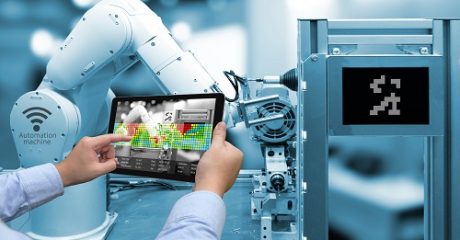Robots are no strangers to the world of manufacturing. However, machine shops around the world are getting smarter and t more efficient. As manufacturing continues to evolve, so do the robots that many have come to rely on. Here are just a few advancements to keep an eye on as we start the new year.
Robots and VR
Programming robots takes time and technological know-how. This can be frustrating for smaller shops who may not have the same technical support as larger ones. However, the time and effort required to “train” shop robots is poised to reduce drastically, thanks to virtual reality. There are companies specializing in training your shop’s robots through new technologies.
The training involves a human performing the task the robot will eventually be charged with and then allowing the robot to copy it. This is called imitation learning, and it allows robots to train in a low-cost, virtual environment without any real-world risks. Furthermore, this type of training involves machine learning, which allows robots to exactly copy human movements.
Robots and Collaboration
Harkening back to the story of John Henry and the steam shovel, there has always been a fear of technology replacing human workers. However, it doesn’t necessarily have to be one or the other. Industrial robots are getting more and more collaborative all the time. That means they’re able to work alongside their human counterparts.
Because of increased advances in artificial intelligence and in lower costs, the use of collaborative robots is on the rise. The great thing about collaborative robots is that they tend to come at a lower price point to begin with and are much easier to use. They are meant to work with employees, so one doesn’t need an advanced degree to use them.
Soft Robots
We tend to think of robots as clunky, metallic figures, but there’s a new player on the field. Thanks to the onset of 3D printing, robots not only got smarter, they got softer. Soft robots can be made of everything from plastic to silicone and are, therefore, much more flexible and moveable, opening them up to a new world of possibilities and applications.
While many “harder” robots are better suited for assembly lines or stationary machines, soft robots, because of their lighter and more flexible frames, can perform in less conventional environments and withstand impacts. The possibilities are endless.
